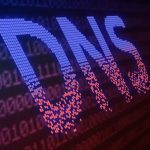Artificial Intelligence: What are 4 major cyber threats for 2024?

AI is one of the most powerful innovations of the decade, if not the most powerful. Yet with that power also comes the risk of abuse.
Whenever any new, disruptive technology is introduced to society, if there is a way for it to be abused for the nefarious gain of others, wrongdoers will find it. Thus, the threat of AI is not inherent to the technology itself, but rather an unintended consequence of bad actors using it for purposes that wreak havoc and cause harm. If we do not do something about these cyber threats posed by the misuse of AI, the legitimate, beneficial uses of the technology will be undermined.
Seven crucial dos and don'ts for cyber-attack survival

Think you’ve been hit by a cyber-attack? You need to move fast, but what immediate actions should you take, or should you not take? Here’s a Cyber Incident Responder’s guide to steer you through the turmoil. The actions your team takes -- or doesn’t take -- can greatly impact the overall duration of recovery, cost, and the potential to uncover vital evidence left by threat actors within your infrastructure.
Identifying a cyber security incident can be challenging. Many threat actors have mastered the art of quietly infiltrating IT systems and hiding their digital footprints. Not all cyber-attacks are as overt as encryption-based ransomware or mandate fraud. The rise of encryption-less ransomware and corporate and state-level espionage is concerning. These silent intruders can lead to data and intellectual property (IP) loss, diminished competitive edge or market share, potential regulatory fines, and reputational damage. All of which can be just as devastating, if not more so, to an organization, its employees, and investors, than a single ransomware incident.
Unlike Netflix, Disney et al, Google thinks password sharing is a good idea

Streaming video services have clamped down on password sharing and have -- as Netflix has shown -- reaped the financial benefits. But while many companies are keen to stamp out the practice of sharing passwords, Google is actively embracing it.
A policy change that was talked about back in February is now rolling out, bringing a new password sharing option to Google Password Manager. The feature makes it possible to share a password in a secure way, without having to write it down.
Dissecting the latest DNS-based attack trends -- What we're seeing and how to get ahead

As the foundational component of the internet, DNS has been around for over 40 years and yet, it remains a major vector for bad actors even today. You might think that DNS wouldn’t be such a big security concern today given how much time we’ve had to come up with a better way to secure it, but lo and behold, it’s still at least partially responsible for a large percentage of cyber-attacks.
DNS-based attacks can include everything from malware to phishing, to domain theft and DDoS (Distributed Denial of Service) attacks, among others. And these can have major consequences for the organizations hit by them. While there are countless examples, some of the most recent and well-publicized ones have included takedowns of ChatGPT and Google Cloud, though almost every bit of modern malware leverages DNS in some way.
Priorities for data center OT security in the cloud era

The decentralized nature of the cloud provides great flexibility for users, but it also introduces great vulnerabilities for data center operators. As an abundant source of valuable data, the modern data center has become a prime target for cybercriminals, from small business facilities to the huge hyperscale colocation data centers run by Amazon, Google, and Microsoft.
Protecting these interconnected facilities and the hardware and software systems that they physically host provides a perpetual job for security teams. But it’s important to recognize the clear distinction between securing information technology (IT) inside a data center facility, versus securing the operational technology (OT), or what’s called “cyber-physical systems” needed to run the facility itself. IT and OT involve two complementary but distinct categories of security and risk.
Cyber security and artificial intelligence -- business value and risk

In the current era of digitalization, cybersecurity has become a topmost priority for businesses, regardless of their size and nature. With the growing dependence on digital infrastructure and data, safeguarding against cyber threats has become crucial to ensure uninterrupted business operations. However, the evolving nature of cyberattacks poses significant challenges for traditional security measures.
This is where Artificial Intelligence (AI) emerges as a game-changer, offering substantial benefits and inherent risks in cybersecurity.
The crypto nexus: The next compliance challenge

Cryptocurrency has been increasingly professionalized in recent years, offering millions of transactions to a global base of everyday users. However, this trend of mainstream investment has happened in tandem with recent high-profile prosecutions of former crypto leaders.
The decentralized nature of cryptocurrency still presents opportunities for bad actors to exploit, particularly for laundering money. Approximately $72 billion a year of illicit transactions is being paid for with crypto, a large portion of which is cleaning dirty money, according to a recent Europol report.
Microsoft fixes VPN issues in Windows 11 with KB5037771 update, and brings ads to the Start menu

Microsoft has released its monthly patches for Windows 11 in the form of the KB5037771 update. There are lots of fixes in this release including for problems with domain controllers, VPNs, and SMB clients.
There are a number of security fixes, but also more controversial changes -- including ads in the Start menu (or app recommendations as Microsoft calls them). Other changes include improvements to Widgets and Windows Subsystem for Linux 2 (WSL2).
Get 'The DevSecOps Playbook: Deliver Continuous Security at Speed' (worth $19) for FREE

In The DevSecOps Playbook: Deliver Continuous Security at Speed, Wiley CISO and CIO Sean D. Mack delivers an expert analysis of how to keep your business secure, relying on the classic triad of people, process, and technology to examine -- in depth -- every component of DevSecOps.
In the book, you'll learn why DevSecOps is as much about people and collaboration as it is about technology and how it impacts every part of our cybersecurity systems.
Confronting quantum computers' cryptanalysis concerns

The race to successfully build quantum computers is on. With the potential to solve all manner of problems for humanity, players across the globe -- from tech companies to academic institutions to governments -- have been busy investing significant resources into quantum computing initiatives for some years now.
But what are they exactly? A traditional (digital) computer processes zeros and ones, so called bits. These, to a first order approximation, are represented as on/off electrical signals. Quantum computers, on the other hand, leverage quantum mechanics to process information using quantum-bits or qubits, which can represent multiple states simultaneously. And it’s this capability that enables quantum computers to tackle computational tasks that are currently out of the question for classical computers - think factoring large numbers, simulating quantum systems, optimizing complex systems or solving certain types of optimization and machine learning problems.
It's time to get proactive on the UK's critical national infrastructure (CNI) security -- but where to start?

The critical national infrastructure that underpins the UK has undergone a tremendous amount of digital transformation in recent years. Areas like water treatment, energy and food production are still heavily reliant on operational technology (OT) systems that were often designed and implemented long before the digital revolution.
Digitizing these systems and connecting them to standard IT networks has allowed operators to boost efficiency and bring in practices like remote working and data collection that weren’t possible in an analogue environment.
Why the financial services industry has to start future-proofing their operations

The digital revolution continues at pace. Yet, whilst many industries are looking to harness the transformative impact of AI and other innovative tech, there are many firms in financial services that are simply unprepared and unable to capitalize on the latest advancements.
A reliance on legacy systems and the use of paper-based forms of communication and record-keeping is holding the sector back. Now is the time for the industry to fully embrace digital transformation strategies or risk being left behind. The benefits of going digital for businesses in the financial services industry are huge, encompassing benefits from streamlining operations and cutting costs, to improving customer experience and overall functionality. Whilst adopting new technologies undoubtedly comes with risks, the sector can ill-afford to stand still in the face of such a rapidly changing world.
Cisco warns of serious CLI command injection vulnerability in its Integrated Management Controller

A serious security vulnerability exists in Cisco Integrated Management Controller (IMC) which can be used by an attacker to elevate privileges to root.
The company has issued a warning about the vulnerability and acknowledged the availability of proof-of-concept exploit code for it. The high severity warning is accompanied by the release of patches, as well as a note that there is no workaround other than a software update.
Native Spectre v2 exploit puts Intel systems running Linux at risk

It's been some time since we discussed the initial Spectre security flaw that impacted numerous CPUs, and which was subsequently followed by the Spectre v2 vulnerability. Now there are new concerns following the discovery of the first native Spectre v2 exploit against the Linux kernel.
Researchers from the Systems and Network Security Group at Vrije Universiteit Amsterdam (VUSec) have demonstrated that Intel CPUs running Linux are vulnerable to Native Branch History Injection (BHI). VUSec says its InSpectre Gadget tool can be used to "not only uncover new (unconventionally) exploitable gadgets in the Linux kernel, but that those gadgets are sufficient to bypass all deployed Intel mitigations".
Microsoft releases Windows 11 Moment 5 and fixes scores of vulnerabilities with KB5036893 update

Windows 11 Moment 5 is now available to everyone. Microsoft has released the KB5036893 update as part of its monthly update schedule, bringing the new Moment 5 features to all users, not just Windows Insiders.
As well as updating Snap Layouts and Copilot, KB5036893 also includes changes to widgets and injects AI features into Photos and Clipchamp. There are also fixes for a huge number of security issues.
Recent Headlines
Most Commented Stories
Windows 12.1 is everything Windows 11 should be -- and the Microsoft operating system we need!
Apple Intelligence will launch in beta and that’s unacceptable for a trillion-dollar company
© 1998-2024 BetaNews, Inc. All Rights Reserved. Privacy Policy - Cookie Policy.